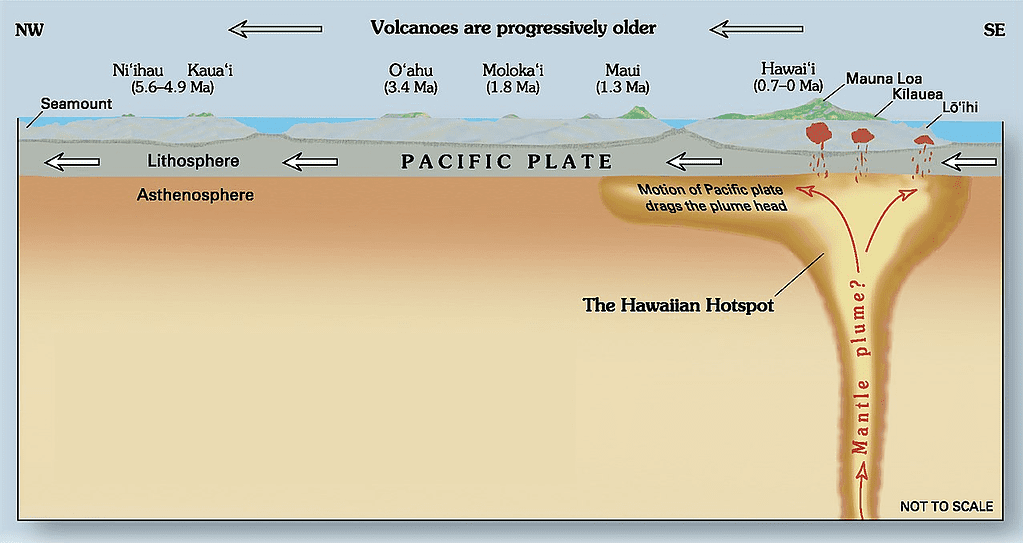The Yellowstone supervolcano is one of the largest and most powerful volcanoes on Earth. If it were to blow up as it did 630,000 or 1.3 million years ago, it would cause major problems for the entire planet, potentially shrouding the entire planet in a thick blanket of ash and dust that blocks our solar rays.
Well, Yellowstone got even more menacing: it’s apparently got even more magma than we thought, a new study claims. But there’s no reason to panic, the researchers add, as this doesn’t make it any more likely to erupt.

The Yellowstone National Park is renowned for its beauty and natural wonders, but the same geological processes that formed this beauty can also trigger catastrophic destruction. The Yellowstone volcano lies in a massive caldera system that was formed by massive eruptions that occurred 2.1, 1.3, and 0.64 million years ago. These eruptions are some of the largest ever recorded, over 1,000 times stronger than the 1980 eruption of Mount St. Helens.
The reason why this volcano is so massive is that it’s linked to the mantle directly. Yellowstone is actually a hotspot, an exceptionally hot part of the mantle that reaches all the way to the surface. When the tectonic plates that underlie the continents and the oceans move around, a hot spot stays fixed in place because it’s linked to the mantle, not the crust, which is where the tectonic plates lie. Hotspots tend to give birth to massive volcanoes, but not all are as dangerous as Yellowstone. Mauna Loa, for instance, is a good example of a hotspot volcano, but its eruptions tend to be much gentler and non-explosive, largely due to the different temperature and chemical composition of the volcano.
Understandably, researchers want to know as much as possible about Yellowstone. The volcano is considered dormant and not likely to erupt anytime soon, but it is still capable of producing eruptions. The volcano is monitored closely by the US Geological Service (USGS) and studies are regularly carried out in and around the volcano.

Ross Maguire of the University of Illinois Urbana-Champaign recently led such a study. Maguire, a geologist, wanted to identify molten magma that can power future eruptions. He employed a technique called seismic tomography, in which seismic waves are used to study the properties of the subsurface. Basically, by looking at the speed of these waves and how they bounce when they encounter different objects, you can infer different bits of information about the subsurface. The technique isn’t exactly new, but Maguire and colleagues used a new analysis technique to study recordings taken between 2000 and 2018.
Based on this tomography, the scientists estimate that the percentage of molten Yellowstone magma is 16-20%, whereas previous models estimated 10% or less.
This parameter is extremely important because a large percentage of melt suggests that an eruption might be impending. However, the study authors say this doesn’t really mean Yellowstone is more likely to erupt.
“Although our results indicate that Yellowstone’s magma reservoir contains substantial melt at depths that fueled prior eruptions, our study does not confirm the presence of an eruptible body or imply a future eruption,” Maguire and colleagues write in their published paper.

In other words, the system isn’t changing now, it’s been like this for some time, and we’re just starting to understand what it’s like. Also, the percentage, while higher than previous estimates, is still significantly lower than the 35%-50% range generally associated with an active eruption. However, there are many other variables and unknowns that affect when and how a volcano erupts, and these are imperfectly understood.
“The melt fraction we estimated is substantially lower than what would be expected if a large fraction of the Yellowstone reservoir were in the eruptible stage of its life cycle,” write the researchers. “However, the presence of small subset volumes of concentrated silicic melt cannot be ruled out.”
The USGS estimates that the magma chamber of the volcano is currently partially full, and is filling up very slowly; if it fills up, it can trigger an eruption. However, an eruption doesn’t necessarily mean a disaster. Over the past 2.1 million years, Yellowstone has had several major eruptive episodes, going boom approximately every 700,000 years. The most recent explosive eruption was some 640,000 years ago, but 70,000 years ago, the volcano had another eruption, but one that came in the form of non-explosive lava flows instead of an explosion — so eruptions at Yellowstone, if they do come, could also be relatively uneventful.
We know quite a bit about Yellowstone now. We know the primary rocks that make it up (such as basalt, andesite, rhyolite, and gneiss), we know of several magma chambers, and we constantly monitor its seismicity. But although it’s perhaps the most-studied volcano on Earth, Yellowstone still has many mysteries we’ve yet to figure out. Given that an eruption could have such a major impact, we’d probably be wise to put even more effort into uncovering its secrets.
The study was published in the journal Science.









